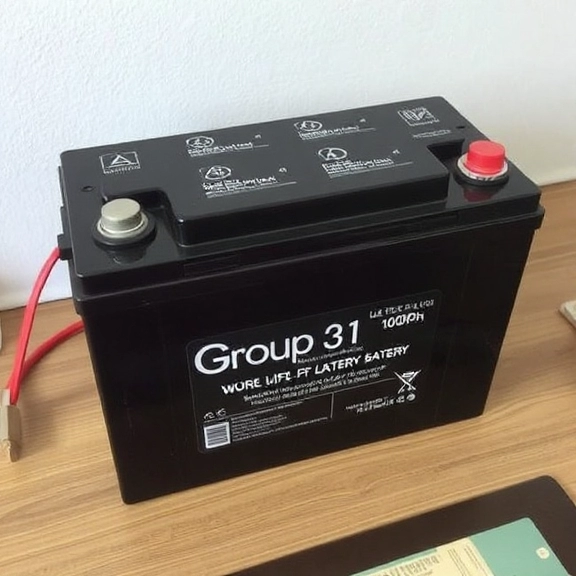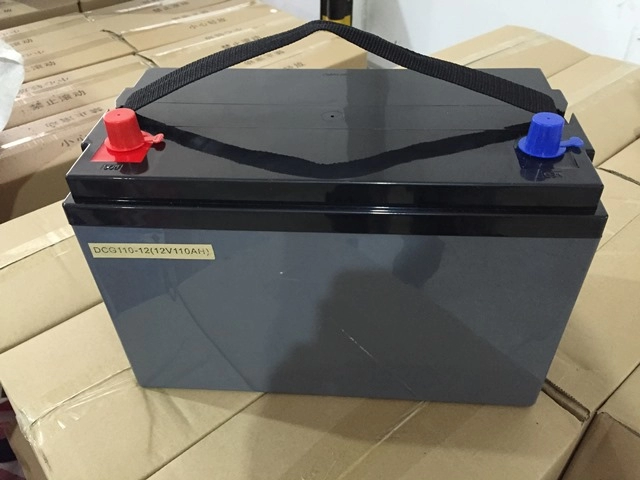Group 31 Deep Cycle Batteries: A Comprehensive Guide | KHZH
Group 31 deep cycle batteries are a vital component in energy storage solutions. Their durability and ability to provide stable power for extended periods make these batteries essential and widely used in various scenarios. Whether you’re powering a boat, RV, or renewable energy system, understanding Group 31 deep cycle batteries helps you make informed decisions. This guide will explore their features, types, sizes, weight, amp hours, lifespan, advantages, and maintenance tips.
Part 1: Understanding Group 31 Deep Cycle Batteries

Group 31 deep cycle batteries are specifically designed to provide steady and reliable power over extended periods. Unlike starting batteries, which provide short bursts of energy to start engines, deep cycle batteries are designed for continuous discharge and recharge cycles. This makes them ideal for applications requiring a long-lasting and dependable energy supply.
Features of Group 31 Deep Cycle Batteries
- Durability: Capable of withstanding repeated deep discharges and recharges without significant performance degradation.
- High Capacity: Offers a substantial amount of stored power, ensuring smooth operation of devices and systems for extended periods.
- Versatility: Suitable for a variety of applications, including marine, RV, and renewable energy installations.
Part 2: Types of Group 31 Deep Cycle Batteries
Group 31 deep cycle batteries are available in several types, each offering unique features and benefits. Selecting the right type is crucial for optimal performance.
Group 31 Deep Cycle Flooded Lead-Acid Batteries
- Contain a liquid electrolyte which submerges the battery plates.
- Require regular maintenance, such as checking and refilling the electrolyte levels with distilled water.
- Cost-effective and reliable, making them a popular choice for many users.
Group 31 Deep Cycle AGM (Absorbent Glass Mat) Batteries
- Use a glass mat to absorb the electrolyte, making them spill-proof and maintenance-free.
- They have a lower self-discharge rate and can handle higher discharge rates than flooded batteries.
- More efficient and offer superior performance but come at a higher cost.
Group 31 Deep Cycle Gel Batteries
- Utilize a gelled electrolyte, ensuring they are spill-proof and maintenance-free.
- They are resistant to vibration and shock and offer a longer lifespan compared to flooded batteries.
- Ideal for harsh environments but are generally more expensive.
Group 31 Deep Cycle Lithium-Ion Batteries
- They use lithium compounds for energy storage, providing a modern and high-performance solution.
- Lightweight, offer high energy density, and have a significantly longer lifespan compared to other types.
- They are the most expensive option but provide unmatched efficiency and performance, making them ideal for high-demand applications.
Part 3: Group 31 Deep Cycle Battery Dimensions
Group 31 deep cycle batteries follow a standardized size, typically measuring around 13 inches in length, 6.8 inches in width, and 9.4 inches in height. This standardization ensures easy installation and replacement in designated battery compartments.
Part 4: Group 31 Deep Cycle Battery Weight
Group 31 deep cycle batteries typically weigh between 60 and 80 pounds, depending on the battery type and construction. Their substantial weight contributes to the battery’s stability and robustness, making them suitable for heavy-duty applications.
Part 5: Group 31 Deep Cycle Battery Amp Hours
Group 31 deep cycle batteries commonly offer a capacity ranging from 75 to 125 amp hours (Ah). This rating indicates the amount of electrical charge the battery can deliver over time, directly impacting performance and runtime.
Group 31 Deep Cycle Batteries: The Ultimate Guide
Part 1: Understanding Group 31 Deep Cycle Batteries
Group 31 deep cycle batteries are well-known for their reliability and long-lasting power. These batteries are designed to provide a steady flow of energy over extended periods, making them ideal for applications that require sustained, deep discharging and recharging, such as in boats, RVs, and renewable energy systems. The robust design of Group 31 deep cycle batteries allows them to withstand regular use and frequent charging cycles without compromising performance.
Part 2: Types of Group 31 Deep Cycle Batteries
Group 31 deep cycle batteries come in several types, each offering unique advantages. The main types are:
- Flooded (Wet Cell) Lead-Acid (FLA) Batteries: Traditional and widely used, these batteries are reliable and cost-effective. They require regular maintenance, including checking and replenishing the electrolyte levels with distilled water.
- Absorbent Glass Mat (AGM) Batteries: Known for their sealed construction and maintenance-free design, AGM batteries are more durable and vibration-resistant, making them well-suited for marine environments and RVs.
- Gel Batteries: These batteries use a gelified electrolyte, providing enhanced durability and performance in extreme temperatures. They are also maintenance-free and offer a safer and more environmentally conscious option.
- Lithium-Ion Batteries: While pricier, lithium-ion Group 31 deep cycle batteries offer superior longevity and energy efficiency. These batteries can last up to 10 years or more if properly maintained.
Part 3: Specifications of Group 31 Deep Cycle Batteries
When selecting a Group 31 deep cycle battery, it’s important to consider several key specifications:
- Voltage: Typically 12V, which is common for most deep cycle batteries.
- Amp-Hour (Ah) Capacity: This indicates the energy capacity of the battery, with a higher Ah capacity meaning the battery can deliver power for a longer duration. The ideal Ah capacity depends on your specific energy needs.
- Cold Cranking Amps (CCA): The battery’s ability to start an engine in cold temperatures. This is particularly important in automotive and marine applications.
- Reserve Capacity (RC) Minutes: The length of time a battery can supply power at a specified load before the voltage drops to a critical level. This is crucial for applications requiring extended power usage.
Part 4: How Long Do Group 31 Deep Cycle Batteries Last?
The lifespan of a Group 31 deep cycle battery is influenced by factors such as usage, maintenance, and battery type. On average, these batteries can last between 3 to 5 years if properly maintained. However, lithium-ion variants can often extend their lifespan to 10 years or more, providing exceptional performance over time.
Part 5: Benefits of Group 31 Deep Cycle Batteries
Group 31 deep cycle batteries offer a range of benefits, making them a popular choice for various applications:
- Exceptional Durability: Designed to handle deep discharges and frequent charging, ensuring long-term reliability.
- Consistent Power: Provides a steady power supply over extended periods, making them ideal for demanding tasks.
- Versatility: Suitable for a variety of applications, from marine and RV to industrial and renewable energy systems.
- Maintenance-Free Options: AGM and gel batteries require minimal maintenance, reducing hassle for users.
- Long Lifespan: With proper care, these batteries can last for several years, with lithium-ion options lasting even longer.
- Eco-Friendliness: Many modern deep cycle batteries are designed with environmental considerations in mind, offering options for recycling and reduced emissions.
Part 6: Maintenance Tips for Group 31 Deep Cycle Batteries
Regular maintenance is key to ensuring the longevity and optimal performance of your Group 31 deep cycle battery. Follow these tips to maximize its lifespan:
- Charge Regularly: Avoid letting the battery fully discharge. Regular charging helps maintain battery health and prevents damage from deep discharges.
- Clean Terminals: Keep the battery terminals free from dirt and corrosion. Use a mixture of baking soda and water to clean the terminals if necessary, then dry thoroughly.
- Check Electrolyte Levels: For flooded batteries, regularly check the electrolyte levels and replenish with distilled water as needed. Always ensure the plates are fully submerged.
- Store Properly: When not in use, store the battery in a cool, dry place. Avoid exposing it to extreme temperatures, as this can negatively impact battery life.
- Avoid Overcharging: Use a charger that matches the battery’s specifications to prevent overcharging, which can lead to overheating and reduced battery life.
- Inspect Regularly: Periodically check the battery for signs of damage, bulging, or leaks, and address any issues promptly to prevent further damage.
- Perform Equalization Charging: For flooded batteries, performing equalization charging periodically helps balance the cells and prevent stratification.
Part 7: Conclusion
Group 31 deep cycle batteries are a reliable and versatile energy solution for a wide range of applications. Understanding the various types, specifications, and maintenance tips for these batteries can help you make an informed choice to meet your power needs. By following proper care instructions, you can ensure your battery provides optimal performance and lasts for years, whether you’re powering a boat, RV, or renewable energy system.








